| |
|
|
|
|
|
|
|
|

|
|

|
Last updated
June 2, 2007 |
|
|
|
| |
|
| Semiconductor quantum dots |
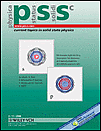 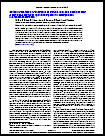 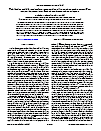 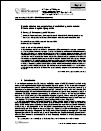 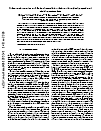
|
|
|
|
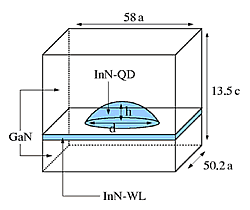
Schematic of a lens-shaped QD grown in Stransky- Krastanov growth mode (Schulz et al., PRB 73, 245327 (2006)).
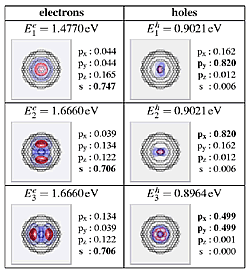
Electron (left) and hole (right) states in an InN/GaN QD (Baer et al., APL 87, 231114 (2005)).
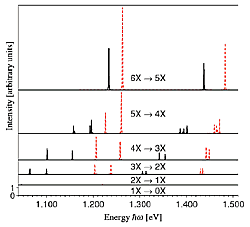
Multi-exciton emission spectra of an InN/GaN QD (Baer et al., APL 87, 231114 (2005)).
|
|
Optical and electronic properties of III-nitride based semiconductor quantum dots
In recent years, semiconductor quantum dots (QDs) have been the subject of intense experimental and theoretical research. As a new material system, group-III nitride based devices are of particular interest due to their wide range of emission frequencies from red to ultraviolet and their potential for high-power electronic applications. Being a technologically promising system, we study self-assembled InN/GaN QDs, which are typically grown by molecular beam epitaxy in Stranski-Krastanov growth mode.
A theoretical description of the one-particle states in terms of a tight-binding (TB) model is used, which provides a powerful approach to the electronic states of low-dimensional heterostructures on an atomistic level. For the calculation of optical absorption and emission spectra, full configuration-interaction (FCI) calculations are used to obtain a consistent description of the correlated many-particle states. The calculation of dipole and Coulomb matrix elements from the TB one-particle wave functions facilitates the combination of these two approaches and allows us to investigate optical transitions between the interacting many-particle states of a QD with parameters obtained from a microscopic model.
As a basic result, it is shown by our investigation that for small lens-shaped InN/GaN QDs the exciton ground state emission vanishes. For larger QDs the twofold degenerate p-like states constitute the hole ground states, which have nonvanishing dipole matrix elements with the electron ground state. This is in agreement with recent k·p calculations and experiments for CdSe QDs. However, although this leads to an—in principle—bright ground state exciton emission for larger QDs, the QCSE, induced by the built-in field, reduces the oscillator strengths by more than one order of magnitude. In the smaller QDs the spatial separation of electron and hole wave functions by the QCSE can drastically be reduced, but the ground state becomes completely dark since the lowest hole states are interchanged.
|
|
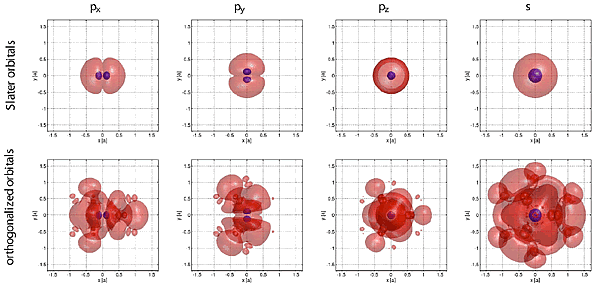
Slater orbitals (top) and numerically orthogonalized Slater orbitals (bottom) used for the calculation
of the dipole matrix elements from the TB wavefunctions (Schulz et al., PRB 73, 245327 (2006)). |
|
|
|
Involved persons and collaborations:
Stefan Schulz, University of Bremen, Germany
Norman Baer, University of Bremen, Germany
Stefan Schumacher, University of Bremen, Germany
Paul Gartner, University of Bremen, Germany
Gerd Czycholl, University of Bremen, Germany
Frank Jahnke, University of Bremen, Germany
|
Funding:
DFG research group:
"Physics of nitride-based, nanostructured, light-emitting devices" |
|
|
|
|